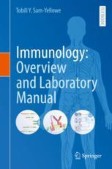Search
Search Results
-
Methods for Study of Mouse T Cell Receptor α and β Gene Rearrangements
Quantitative real-timePCRquantitative real-time PCR and next-generation sequencing (NGS) are invaluable techniques to analyze T cell receptor (Tcr)...
-
Gene Rearrangements in the Mitochondrial Genome of Gonatopsis borealis and Onychoteuthis compacta Reveal Their Phylogenetic Implications for Oegopsida
The complete mitochondrial genome provides crucial information for comprehending gene rearrangement, molecular evolution, and phylogenetic analysis....

-
Scrambling the genome in cancer: causes and consequences of complex chromosome rearrangements
Complex chromosome rearrangements, known as chromoanagenesis, are widespread in cancer. Based on large-scale DNA sequencing of human tumours, the...

-
Structural rearrangements as a recurrent pathogenic mechanism for SETBP1 haploinsufficiency
Chromosomal structural rearrangements consist of anomalies in genomic architecture that may or may not be associated with genetic material gain and...

-
Frequency and distribution of BRCA1/BRCA2 large genomic rearrangements in Turkish population with breast cancer
Germline mutations in BRCA1 and BRCA2 genes are mainly responsible for breast and/or ovarian cancer patients. Most of the mutations in these genes...

-
Immunoglobulin and T Cell Receptor Gene Rearrangements
The antigen binding receptor molecules on B and T lymphocytes are synthesized and expressed on the surface of the cells during development in the...
-
Next-Generation Sequencing-Based Clonality Detection of Immunoglobulin Gene Rearrangements in B-Cell Lymphoma
Immunoglobulin (IG) clonality assessment is a widely used supplementary test for the diagnosis of suspected lymphoid malignancies. The specific...
-
FISH-Banding for Characterization of Simple and Complex Chromosomal Rearrangements in Cancer
While interphase and metaphase-directed molecular cytogenetics is a standard technique in routine tumor (cyto)genetics, fluorescence in situ...
-
Intragenomic rearrangements involving 5′-untranslated region segments in SARS-CoV-2, other betacoronaviruses, and alphacoronaviruses
BackgroundVariation of the betacoronavirus SARS-CoV-2 has been the bane of COVID-19 control. Documented variation includes point mutations,...

-
A treatment-refractory aggressive MDS-MLD with multiple highly complex chromosome 5 intrachromosomal rearrangements: a case report
BackgroundA patient with a myelodysplastic neoplasm exhibited a karyotype with multiple complex chromosome 5 rearrangements. This patient appeared to...

-
Optical genome map** identifies clinically relevant genomic rearrangements in prostate cancer biopsy sample
BackgroundProstate cancer (PCa) is characterized by complex genomic rearrangements such as the ETS oncogene family fusions, yet the clinical...

-
The Role of Cytogenetic Rearrangements in the Formation of Resistance in Relapse of Acute Lymphoblastic Leukemia
AbstractCytogenetic rearrangements were studied in bone marrow cells of 24 patients with relapse of acute lymphoblastic leukemia (ALL). The authors...

-
Breakpoints in complex chromosomal rearrangements correspond to transposase-accessible regions of DNA from mature sperm
Constitutional complex chromosomal rearrangements (CCRs) are rare cytogenetic aberrations arising in the germline via an unknown mechanism. Here we...

-
Cytogenomic characterization of pediatric T-cell acute lymphoblastic leukemia reveals TCR rearrangements as predictive factors for exceptional prognosis
BackgroundT-cell acute lymphoblastic leukemia (T-ALL) represents a rare and clinically and genetically heterogeneous disease that constitutes 10–15%...

-
Extensive ITR expansion of the 2022 Mpox virus genome through gene duplication and gene loss
Poxviruses are known to evolve slower than RNA viruses with only 1–2 mutations/genome/year. Rather than single mutations, rearrangements such as gene...

-
Bulk gDNA Sequencing of Antibody Heavy-Chain Gene Rearrangements for Detection and Analysis of B-Cell Clone Distribution: A Method by the AIRR Community
In this method we illustrate how to amplify, sequence, and analyze antibody/immunoglobulin (IG) heavy-chain gene rearrangements from genomic DNA that...
-
Mosaic derivative chromosomes at chorionic villi (CV) sampling are expression of genomic instability and precursors of cryptic disease-causing rearrangements: report of further four cases
Mosaic chromosomal anomalies arising in the product of conception and the final fetal chromosomal arrangement are expression of complex biological...

-
Methylation status of genes esca** from X-chromosome inactivation in patients with X-chromosome rearrangements
BackgroundX-chromosome inactivation (XCI) is a mechanism in which one of two X chromosomes in females is randomly inactivated in order to compensate...

-
Analysis of complex chromosomal rearrangements using a combination of current molecular cytogenetic techniques
BackgroundUsing combined fluorescence in situ hybridization (FISH) and high-throughput whole-genome sequencing (WGS) molecular cytogenetic...

-

